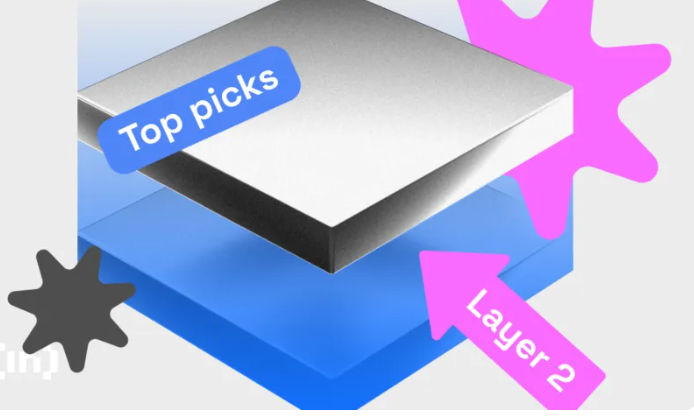
Creating a Layer 2 (L2) solution in the cryptocurrency space involves a multifaceted process that combines technical expertise, strategic planning, and regulatory compliance. In this comprehensive explanation, we’ll delve into the intricacies of how enterprises can launch their own L2 solutions, exploring various approaches, considerations, and implementation strategies.
Introduction to Layer 2 Solutions

Layer 2 solutions are protocols or frameworks built on top of existing blockchain networks, such as Ethereum, to address scalability, speed, and cost issues. These solutions enable faster and more efficient transaction processing by moving some of the computational and storage burden off-chain while still maintaining the security of the underlying blockchain. Enterprises often opt to develop their own L2 solutions to meet the specific needs of their business operations and users.
Technical Considerations
- Sidechains: �
One approach an enterprise can take to launch their own L2 solution is by creating sidechains. Sidechains are separate blockchains that are interoperable with the main blockchain, allowing for the transfer of assets between the two chains. Enterprises can customize sidechains to support their desired features and functionalities, such as faster transaction processing, lower fees, or privacy enhancements. Implementing sidechains requires expertise in blockchain development and consensus mechanisms, as well as considerations for security and decentralization.
- State Channels:
State channels are off-chain solutions that enable parties to transact directly with each other without involving the main blockchain for every transaction. Enterprises can develop state channel networks to facilitate fast and low-cost transactions for their users. This approach is particularly well-suited for applications that require frequent interactions between participants, such as gaming or microtransactions. Building state channel networks involves implementing smart contract logic for opening, closing, and settling channels, as well as ensuring robust security mechanisms to prevent fraud or disputes.
- Plasma:
Plasma is a framework for building scalable and secure decentralized applications (dApps) on Ethereum and other compatible blockchains. Enterprises can develop Plasma chains to create scalable solutions for their dApps, such as decentralized exchanges (DEXs), non-fungible token (NFT) marketplaces, or supply chain tracking systems. Plasma chains operate as nested blockchains within the main blockchain, allowing for increased transaction throughput and reduced latency. Implementing Plasma chains requires expertise in Ethereum smart contract development, as well as considerations for data availability and exit mechanisms.
- Rollups:
Rollups: Rollups are Layer 2 solutions that bundle multiple transactions into a single transaction and submit them to the main blockchain for verification. Enterprises can implement rollup solutions to improve the throughput and efficiency of their blockchain applications. There are two types of rollups: optimistic rollups and zk-rollups, each offering different trade-offs between scalability and security. Optimistic rollups rely on fraud proofs to ensure the validity of transactions, while zk-rollups use zero-knowledge proofs for enhanced privacy and scalability. Implementing rollup solutions requires expertise in cryptographic techniques and smart contract development, as well as considerations for gas costs and transaction finality.
Strategic Planning and Implementation
- Define Objectives and Use Cases: Before launching a Layer 2 solution, enterprises must clearly define their objectives and use cases to ensure alignment with business goals and user needs. This involves identifying specific pain points or inefficiencies in existing blockchain applications and determining how a Layer 2 solution can address them. Enterprises should also consider potential regulatory and compliance requirements, as well as market dynamics and competitive landscape.
- Technology Selection and Development: Once objectives and use cases are defined, enterprises can select the most appropriate technology stack and development approach for their Layer 2 solution. This may involve leveraging existing open-source frameworks and protocols, such as Plasma or rollups, or building custom solutions tailored to their specific requirements. Enterprises should allocate resources for blockchain development, including hiring skilled developers and conducting thorough testing and auditing to ensure the security and reliability of their L2 solution.
- Integration and Deployment: After development is complete, enterprises must integrate their Layer 2 solution with existing infrastructure and deploy it to production environments. This may involve coordinating with blockchain network validators or node operators to ensure seamless interoperability with the main blockchain. Enterprises should also provide documentation and support for developers and users to facilitate adoption and usage of the L2 solution.
- Monitoring and Optimization: Once the Layer 2 solution is live, enterprises must monitor its performance and continuously optimize it to meet evolving user needs and market conditions. This may involve implementing performance metrics and analytics to track transaction throughput, latency, and cost-effectiveness. Enterprises should also solicit feedback from users and stakeholders to identify areas for improvement and prioritize future development efforts accordingly.
Regulatory and Compliance Considerations
In addition to technical considerations, enterprises must also navigate regulatory and compliance requirements when launching their own L2 solutions. This may involve obtaining licenses or permits from regulatory authorities, complying with anti-money laundering (AML) and know-your-customer (KYC) regulations, and implementing robust security measures to protect user data and assets. Enterprises should also stay informed about legal developments and industry best practices to ensure compliance with relevant laws and regulations.
Conclusion
In conclusion, launching a Layer 2 solution in the cryptocurrency space requires a comprehensive approach that encompasses technical expertise, strategic planning, and regulatory compliance. Enterprises can leverage various technologies and development approaches, such as sidechains, state channels, Plasma, and rollups, to create scalable and efficient solutions tailored to their specific use cases and business objectives. By carefully defining objectives, selecting appropriate technology stacks, and navigating regulatory requirements, enterprises can unlock the full potential of Layer 2 solutions to drive innovation and growth in the cryptocurrency space.